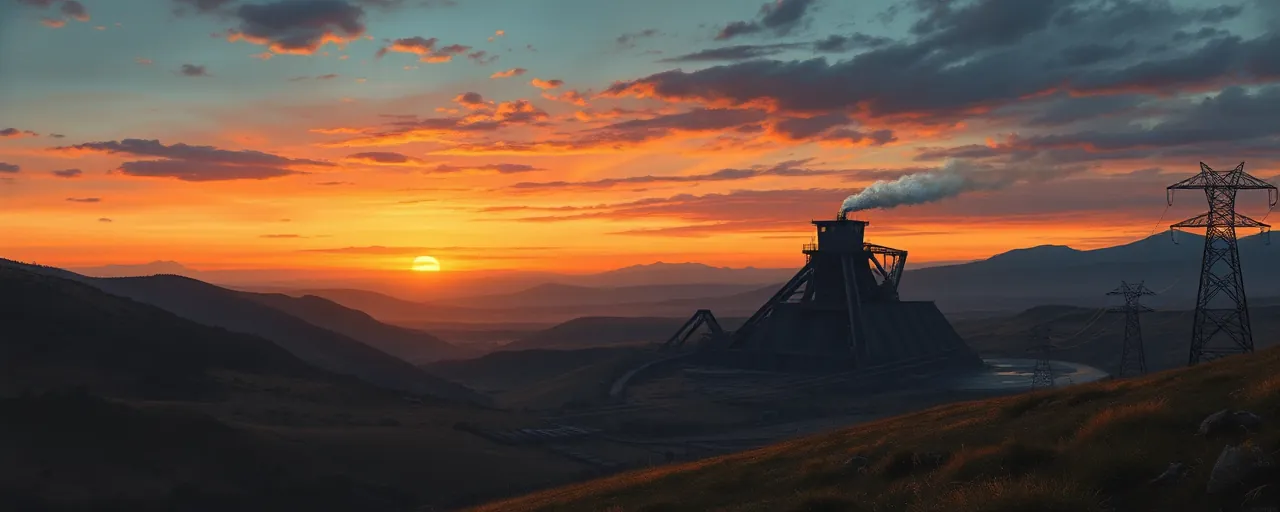A New Chapter for Coal
On April 8, 2025, President Donald Trump put pen to paper, signing an executive order that breathes fresh life into America’s coal industry. It’s a move that’s grabbed attention far beyond the White House, promising to reshape the nation’s energy landscape. The order designates coal as a key mineral, unlocks federal lands for mining, and scraps policies that once nudged the country away from this long-relied-upon fuel. For supporters, it’s a bold step toward energy independence and economic revival. For others, it’s a jolt that could unravel years of environmental progress.
The stakes feel tangible. Coal, with its gritty history, powers homes, factories, and now, the cutting-edge data centers driving artificial intelligence. Yet its revival lands at a crossroads. Rising electricity demands clash with a world increasingly eyeing cleaner options. This isn’t just about keeping the lights on; it’s about jobs, global standing, and the air people breathe. The question hangs heavy: can coal’s comeback deliver without tipping the scales too far?
Powering Jobs and AI Dreams
Coal’s economic punch is hard to ignore. The industry directly employs about 150,000 people in the U.S., with each mining job sparking over three more in related fields, from transport to equipment manufacturing. That’s half a million livelihoods tied to coal’s fate. In places like West Virginia and Pennsylvania, mining towns lean on these jobs to keep schools funded and stores open. Last year alone, coal added billions in wages and taxes, a lifeline for rural economies often left scrambling.
Then there’s the AI angle. Data centers, the backbone of machine learning and tech innovation, guzzle electricity like nothing else. The executive order pushes coal to meet that hunger, arguing it’s a reliable fix for a grid stretched thin by surging demand. Advocates say it’s practical, a way to fuel a tech boom while keeping power bills in check. Still, whispers of doubt linger. With natural gas prices spiking in 2025, coal use jumped 21% over last year, but cleaner alternatives like wind and solar wait in the wings, begging the question of longevity.
The Air We Share
Coal’s return isn’t all rosy. Burning it pumps out a third of America’s carbon dioxide emissions, not to mention sulfur dioxide, mercury, and fine particles that choke lungs and cloud skies. Environmental groups point to 2025 data showing a 21% spike in coal-related emissions, a stark reminder of the toll. Globally, the push risks clashing with efforts to cap warming at 1.5 degrees Celsius, a target many nations still chase despite uneven progress. Carbon capture tech exists, but it’s pricey and rare, leaving critics skeptical of coal’s ‘clean’ label.
Health weighs in too. Respiratory illnesses tied to coal pollutants hit communities near power plants hardest, often in the same rural areas banking on mining jobs. It’s a trade-off that’s sparked heated debate. Some argue the economic boost justifies it; others see a looming cost in hospital visits and climate fallout that no paycheck can offset. The tension feels raw, a tug-of-war between today’s gains and tomorrow’s air.
Friends, Foes, and Coal Exports
Beyond borders, this coal revival ripples outward. The order ramps up exports, aiming to lock in trade deals with countries hungry for affordable energy. Nations like India and Japan, still leaning on coal for power, could deepen ties with U.S. suppliers, bolstering America’s leverage. Energy security gets a nod too, with less reliance on foreign fuel easing strategic worries. It’s a play that could steady allies and flex economic muscle.
Yet not everyone’s cheering. Countries doubling down on renewables, from Germany to South Korea, eye the U.S. shift warily. The Paris Climate Agreement, which Trump exited years back, looms as a sore point. Exporting more coal might fatten trade balances but thin out goodwill among nations racing to decarbonize. Analysts warn of strained talks at climate summits, where America’s coal push could paint it as a lone holdout in a warming world.
What Lies Ahead
The executive order lands as a bet on coal’s staying power. It’s rooted in a promise of cheap energy, steady grids, and thriving towns, all while fueling tech’s next leap. Numbers back some of it up—coal still delivers 16% of U.S. electricity and shines during winter peaks when gas falters. For now, it’s a lifeline for workers and a jolt for industries racing to keep up with AI’s appetite. The vision’s clear: a nation powered by its own resources, standing tall.
But the horizon’s hazy. Coal’s edge frays against cheaper renewables and a global tide turning green. Emissions, health risks, and diplomatic tightropes shadow every ton mined. People aren’t just watching policy unfold; they’re living its fallout, from cleaner skies to paychecks cashed. As America digs deeper into its coal veins, the real test isn’t just what it gains, but what it’s willing to breathe in—or leave behind.
